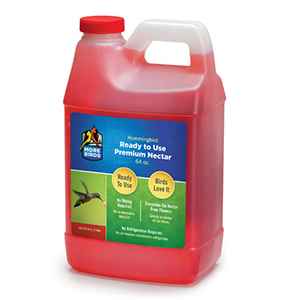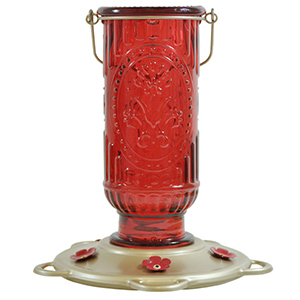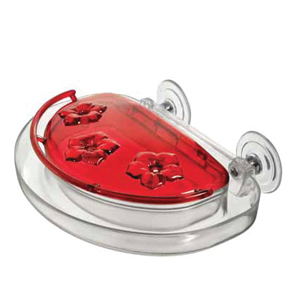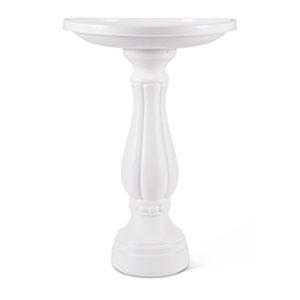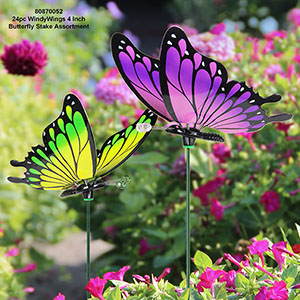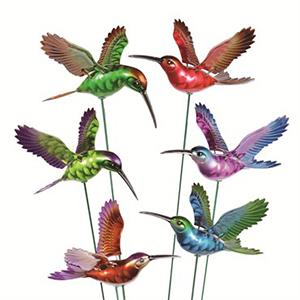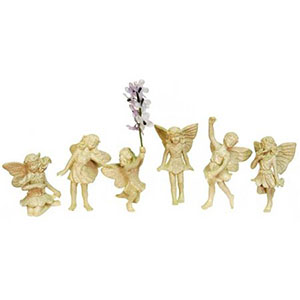According to
the Ruby-throated Hummingbird migration
map, hummingbirds
have been spotted along the New England coastline since the first week of
April. It’s no surprise: The weather is warming and spring is unfolding before
our eyes. The calendar tells us to “think spring” and the birds know when to
start breeding, too! If you’ve done some planning in February and March, you’ll
soon be rewarded with birds filling up your yard with color and interesting sounds.
Welcome, Travelers!
Bird
migration varies by species. Many of us have surely pinned our noses to window
panes to catch (and celebrate) a glimpse of spring’s first red robin in the
yard. The timing is just about right for flowers, shrubs and bulbs opening in
the landscape to provide some food along their journey. For homeowners who’ve
placed bird houses around their yards, they’ll likely see activity in them by
now.
Birds are
resourceful, using a range of materials to construct their nests. Some popular
nesting materials include cloth, paper and branches to dryer lint or
insulation. Consumers can help provide nesting materials simply by stringing
such items onto a fence line, tree or pole. Another way to help: Place
materials inside a suet cage and hang away from windows and glass to prevent
injury to birds that might mistake glass for open spaces.
Preparing a Banquet
Birds need
food, water and protection to live comfortably in any environment. Remind your
customers to clean their existing birdfeeders, especially if they haven’t done
so during the winter. Bird baths also should be cleaned and rinsed thoroughly before
a refill.
Here are two
popular and effective cleaning solutions you can share with your customers:
- Combine
1 part chlorine bleach with 10 parts water, and immerse your feeder into the solution for 2-5 minutes
- Mix up a 50/50 solution of water and white vinegar, and soak your feeder completely for 2-5 minutes
After
soaking, scour or brush the feeder and then let it dry completely before
re-filling. Today’s best feeder companies, like Aspects, offer a quick-clean
release on the bottom of the feeder to assist in cleaning chores.
Come and Get It
Different
types of bird seed work best in different scenarios. Lead each customer to
their best bird-seed match with a few simple questions:
- Which types of birds are you trying to attract?
- Do you need more than one feeder?
- How big is your wallet?
Some bird
species thrive on specific types of foods. Songbirds and finches, especially
goldfinch, enjoy both sunflower and Nyjer seeds best.
Placement of the
feeder is also an important key on getting even the most timid of birds to
explore dinner options. Many birds feed at different levels and consumers may
have some success (and rewards) by positioning more than one feeder in their
yards to maximize the fun.
Some bird
watchers use combo feeders throughout the year to offer both bird seed in a
feeder hopper and suet in a cage on either one or two ends. Recommend an
all-season type of suet like suet dough cakes from Pine Tree Farms to keep the
suet fresh and ready for consumption.
Vacationing Visitors
As mentioned,
hummingbirds return from their winter migration and are looking for nectar-bearing
flowers. These beauties dart quickly across the property, but offer a freeze
frame of enjoyment when they feed by flapping their wings furiously as they hover.
Some hummingbird
species are territorial. To maximize feeding and bird-watching opportunities,
but minimize conflict, encourage your customers to put out multiple hummingbird
feeders, positioning them on opposite sides of the residence.
One of the
unique birds you may want to attract is the bluebird. They love open fields and
platform feeders, and to feast on dried mealworms. You can enhance their stay
by erecting bluebird houses nearby.
What’s Bugging You?
The purple
martin is one of nature’s winged warriors that provide insect control throughout
the summer months. These birds love to colonize together in harmony while
living in multi-dwelling martin houses that are mounted on posts or poles at
least 10 feet off of the ground. Each martin house includes 8-12 (or more!)
compartments, in which the residence can breed and expand their families. They’re
fun to watch, and can provide amusing torture for resident cats that are within
eyesight of their nest.
Make It a Garden Party
Plenty of
additional winged guests can add interest and enjoyment to the home and garden.
Butterfly houses and butterfly feeders, staked garden fairies, whirly-gigs of
birds and colorful insects, even weathervanes can provide movement in or around
the garden.
Wind-driven
motion is a surefire way to attract eye-catching attention and provide
entertainment all season long for both young and old. Consider offering an
assortment of wind chimes for those looking to bring some color and sounds to
their backyards, too. Just add wind and enjoy!


